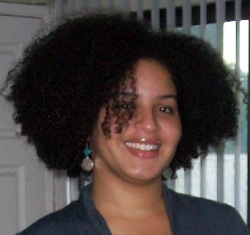
As we all know, February is Black History Month. It’s a month where we honor those who have made an impact on American culture for equal rights, those who have invented, those who have a helped others and those who have inspired everyone to be the best they can be, not only as a person of color but as a human. Last year for Black History Month, I started an online series called 28 Days Diversity where I would feature someone new everyday during the month of February for just being awesome in their own right. Even though it’s black history month, the goal for 28 Days of Diversity is to feature not just African-Americans but other minorities in the web/tech space. Also note that 28 Days of Diversity is not a popularity contest or an influencer list but a list of thought leaders in the social web sector, including entrepreneurs, bloggers, conference organizers, IT professionals and friends not ranked in any particular order who I have either met in person or followed online. Each post will include a picture, bio, two links from the selected person and this paragraph.
For 2011 I wanted to not just feature individuals but also address a topic that affects everyone. For 28 Days of Diversity 2011 each post/person will answer the question “How can we use technology to close the digital divide?” So for the next 28 days, come back to visit SocialWayne.com/tag/28daysofdiversity and 28daysofdiversity.com to see who’s on the list. For day 24, I would like to introduce to some and present to others:
Tiffany B. Brown
Twitter: @webinista
Website/Blog: tiffanybbrown.com
Bio
Tiffany is a Web Opener with Opera Software where she works to ensure an open, standards-compliant web. Prior to joining Opera, she worked for six years as a web developer with Georgia Tech and Armchair Media in Atlanta, Georgia, and with a small cadre of freelance clients. Tiffany received her B.A. from American University in Washington, D.C. She lives in Los Angeles.
How can we use technology to close the digital divide?
I think that’s the wrong question. The digital divide isn’t
really a technical problem. It’s a cultural, political, and economic
problem.
If our entire country had affordable broadband access tomorrow, that
doesn’t mean we’d suddenly have millions more game developers. We’d
have more people watching HD YouTube videos. This is much more about
our priorities as a culture and nation.
I think the right question is “How do we eliminate the cultural,
political, and economic barriers to building a media literate,
technically competent, technically creative public?”
Politically, let’s be pro-active about getting programming and
computer engineering classes in our schools. Start a community program
to teach adults digital media literacy or web development. Demand more
access to computing resources in schools and libraries. One hour of
internet surfing time on a locked down computer isn’t going to make
you a software engineer.
Culturally, we need to prioritize creative tech purchases over
consumption-optimized ones: buy a computer instead of an Xbox. Or if
you do buy an Xbox, discuss video game story development with your
kids. Encourage them to think up their own game concepts. How about
you and your child both learn how to hack a Kinect? Learn how to build a
computer then install Ubuntu, a
free operating system.
Now, I do think technology and technologists can help solve the
economic angle of the digital divide. For us, the follow-up question
is “How do the design and implementation decisions I make reinforce or
reduce these cultural, economic, and political barriers?”
For example, is your employment application process is entirely
online? That sets an expectation of technical literacy even for
low-skilled jobs. And it’s potentially discriminatory against poor
people and older workers. So what if you provided an SMS-based or
interactive voice response service? Almost everyone has a phone, even
if it’s a land line. What about a paper-and-OCR or tablet-and-stylus
solution? Applicants can still write their responses, but it’s then
digitally stored?
Do you design hardware that can be upgraded by its owner? Gadgets are
expensive. Not everyone can afford the newest and greatest computers
and phones. But they may be able to afford more RAM or a new
motherboard. Do you design software that can run on a less-expensive,
lower-powered CPU so that your users don’t have to buy new hardware to
use your software? Does your service run well on a mobile phone or
small screened laptop? Do you follow long-established accessibility
principles? Does your web application compensate for high network
latency or instability?
Substantive change will require sustained public pressure on
government and industry. But in the meantime, we can take action in
our own communities to educate, inform, and empower. And we can take
action in our business lives to ensure that we are not a part of the
problem.
You can follow the status of 28 Days of Diversity 2011 on http://28daysofdiversity.com, https://socialwayne.com/category/28-days-of-diversity/ and syndicated on BlackWeb 2.0.
